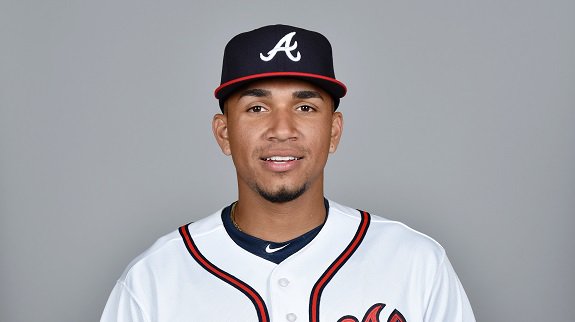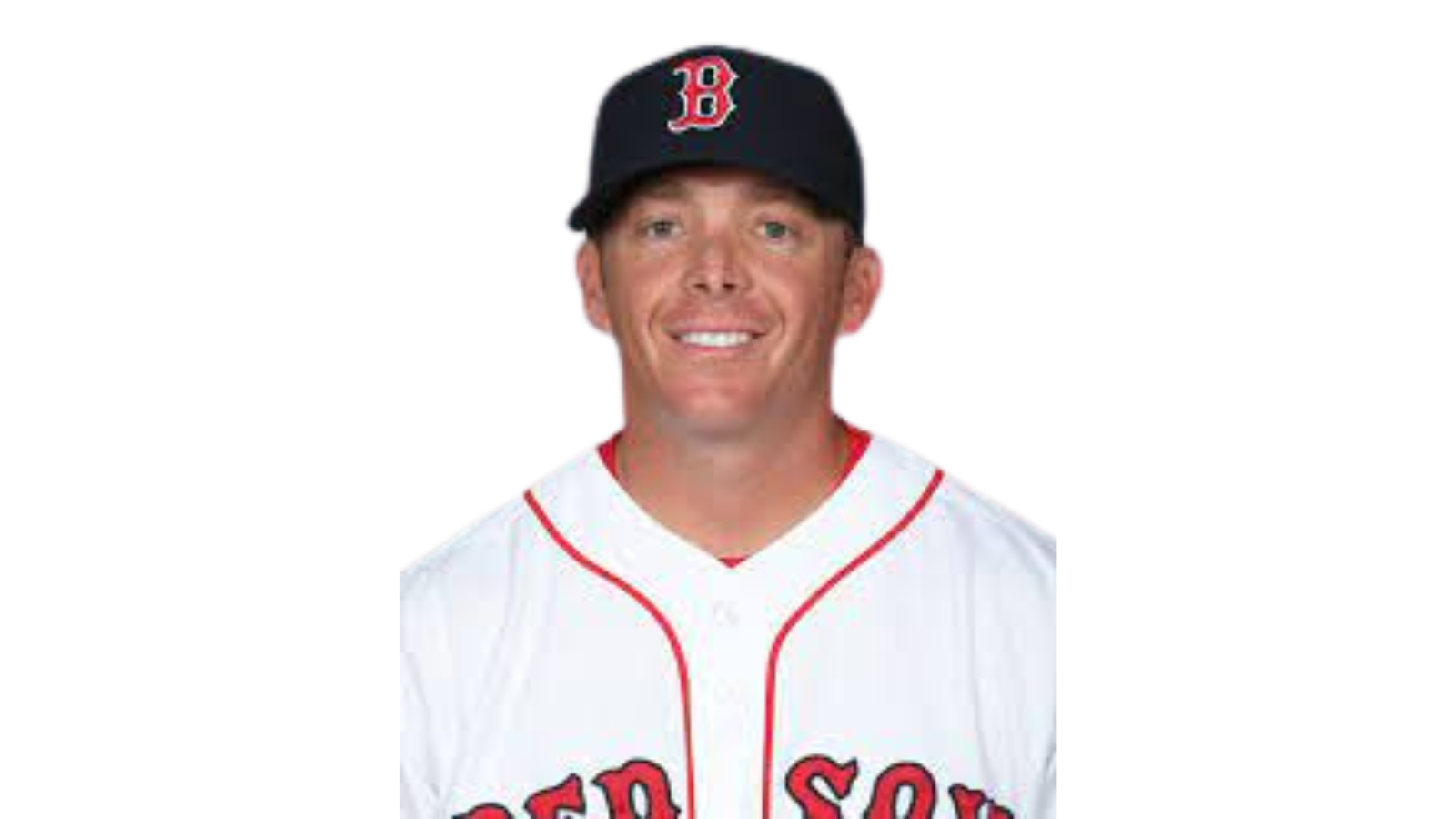Sitting back behind the pool in a newly-built house in a suburb about 40 minutes north of Atlanta, former Braves catcher Tyler Flowers has a special appreciation for defense and defensive metrics. He knows that’s what got him paid.
“If I was born 10 years earlier, my career would have been over in two years,” said Flowers, who now works for the Braves analytics department developing pitcher-catcher game plans “(The value of pitch framing) is 100% of the reason why I’m sitting here right now.”
Phillies general manager Sam Fuld had a similar sentiment when we talked to him on our company’s baseball podcast a few weeks ago.
“I’m always going to be a little bit biased because I think that’s how I became a major leaguer,” Fuld said of defensive metrics. “Without my defensive value, I would have been hanging up my cleats a lot earlier than I did.”
Flowers is our No. 1 catcher overall in our Strike Zone Runs Saved metric, which we began tracking in 2010. Fuld is the No. 1 outfielder in Defensive Runs Saved on a per-inning basis dating back to the stat’s inception in 2003.
The availability of these metrics, whether they are ours or come from other sources like FanGraphs, Baseball-Reference, Statcorner, Baseball Prospectus, or Baseball Savant, allows us to learn things like this that we wouldn’t have known previously.
With the availability of 20 years of Defensive Runs Saved data, I thought it would be cool to look at the impact it had on our knowledge and understanding of players and their skills.
It helped a player become a Hall of Famer
This one’s pertinent because of its recency. Scott Rolen’s election to the Baseball Hall of Fame was helped by his defensive metrics.
To wit, Rolen ranks 17th among third basemen in Baseball-Reference’s Offensive Wins Above Replacement. Most of the players surrounding him on both sides: Sal Bando, Ken Boyer, Graig Nettles, David Wright, and Ron Cey aren’t in the Hall of Fame. Rolen’s offensive stats resemble Cey’s, with whom he’s tied in career home runs with 316.
People know that Rolen was a great defensive third baseman. But a system like Defensive Runs Saved, in which we can scale Rolen’s defensive numbers* with his offensive numbers, vaults him to 10th in Jay Jaffe’s JAWS Hall of Fame rating. That’s the kind of thing that can and probably did sway a BBWAA Hall voter or two … or enough to get Rolen into the Hall of Fame.
* 114 Defensive Runs Saved, 3rd-most of anyone at the position without even counting 1996 to 2002, which pre-date the stat.
Maybe it’ll help some others
Zack Greinke just re-signed with the Royals and we’re guessing it’s not on his radar that he’s tied with Mark Buehrle for the most Defensive Runs Saved by a pitcher in the last 20 years, or one Bunt Run Saved shy of Adrián Beltré for the most in the 20 years we’ve kept track of that stat. Someone just asked me if I thought Greinke was a Hall of Fame candidate. I made the comp to Rolen, saying he’s borderline, but maybe the defensive excellence is a factor in pushing him over the top.
The same could be said for Chase Utley, who’s on next year’s Hall of Fame ballot. Utley ranks second in Defensive Runs Saved among second basemen
Over the last 20 years. Utley ranks 19th among second basemen in the Offensive Component of WAR, but his Defensive WAR helps bump him to 12th overall in JAWS.
It flipped a script
I’m not here to relitigate this, but rather just to restate the study that put defensive metrics on the map, so to speak.
Defensive Runs Saved shows that Derek Jeter made considerably fewer plays than expected at shortstop, far fewer than would be expected from a player who won five Gold Gloves. And Adam Everett, who never won a Gold Glove, made considerably more plays than expected.
Bill James illustrated this with three different methodologies in an essay introducing how our defensive stats can be applied. Want to read it? You can find it here.
It helped get big-time players paid
Jason Heyward had his two best seasons in Defensive Runs Saved in the two seasons leading into his free agency. Heyward garnered an eight-year, $184 million contract from the Cubs in the 2015-16 offseason, after a year with the Cardinals in which he overwhelmingly led right fielders with 24 Runs Saved, while posting a respectable but not overwhelming 117 OPS+.
Heyward’s 2.3 Defensive WAR, as calculated by Baseball-Reference, vaulted him into an elite group of players at just the right time.
Heyward was most likely paid for the tantalizing potential he showed early in his career. But the great defense, particularly chasing down fly balls hit to the deepest part of right field, certainly helped.
It made and lengthened careers
Fuld and Flowers both acknowledged that they wouldn’t have gone very far without the existence of metrics that showed the value of their defensive skill.
In Fuld’s case, he’s talking about the 2011 season when he tallied 11 Runs Saved and made great play after great play. As such, he stayed in the majors for four more years, with teams willing to keep him around even though his OPS+ in that span was 72.
Fuld was among a good number of fly ball chasers who have been financially rewarded and had their careers begun and extended because we can more accurately put a number to their value in the field. That includes Platinum Glove Award winners like Kevin Kiermaier and others who have made long runs of being part-timers and specialists like Jarrod Dyson.
In Flowers’ case, we weren’t the only ones to come up with stats to measure pitch framing. Stat Corner and Baseball Prospectus were among the other early pioneers in the field. Collectively, we all established value for a certain type of catcher, beyond those who could hit like Buster Posey and Yasmani Grandal, or do everything like Yadier Molina.
What the Strike Zone Runs Saved component of DRS did was show that the value of the likes of Flowers and many others (Chris Stewart, Jose Molina, Jeff Mathis, and two current Flowers favorites, Max Stassi and Austin Hedges, for example) was significant.
“It was my biggest asset and my biggest strength,” Flowers said. “I took a lot of time, if not the majority of my time, to find a way to become better and better at it.”
It showed us other things we thought about but couldn’t quantify for catchers
Another defensive stat that plays a role in Runs Saved is pitch block rate.
That stat enhanced the value of someone like Jonathan Lucroy, who was not just a great pitch framer in his prime. He also had a brief run as an elite pitch blocker.
Blocked pitches, which SIS Video Scouts have been tracking since 2004, have a run value of about 0.3 runs, wild pitches and passed balls cost catchers about a quarter of a run. A catcher’s totals in each of these are summed and compared to expected performance based on pitches caught.
Over the years, we’ve found that the average pitch block rate is usually around 91%. The elite catchers will be 93% or higher. The subpar catchers are usually in the 86-87% range.
In 2014, Lucroy blocked 801 pitches in all, blocking 95.7% of potential wild pitches. The 801 blocks is the most by any catcher in the 19-year history of our tracking (we didn’t track this stat in 2003).
Lucroy’s doing so at an elite rate resulted in him totaling 10 Good Play/Misplay Runs Saved*, tied for the most by a catcher in any season (Robinson Chirinos matched that with a 96.2% rate, though only 535 blocks in 2019).
* Good Play/Misplay Runs Saved combines pitch blocking with things like well-executed blocks of home plate
What we thought about but couldn’t quantify for Infielders …
Pitch framing and its stats get a lot of the attention because the impact is so vast, but 20 years of evaluating defense have led to quantifying several other previously unmeasured areas.
Any ball hit that is fielded by a middle infielder in a double play situation is considered an opportunity, one that is either converted or not. A player’s Double Play Runs Saved is based both on their conversion rate, the number of opportunities, and batted ball locations relative to being able to turn them into outs.
The 2022 leader in this stat was Tigers second baseman Jonathan Schoop, who had 4 Double Play Runs Saved off a conversion rate of 74% (MLB average was 62% for second base, 61% for shortstops).
The 20-year leaders in Double Play Runs Saved are Ian Kinsler and Andrelton Simmons with 23. The most Double Play Runs Saved on a per-inning belongs to Alex Cora. As a shortstop Cora converted 72% of double play chances.
What we thought about but couldn’t quantify for outfielders …
We’ve also created ways to go beyond assists in quantifying outfielder arm value. They don’t make em quite like right fielder Richard Hidalgo’s anymore. In 2003, the first season of Defensive Runs Saved, Hidalgo had 22 outfield assists for the Astros, including 19 that did not involve the use of a relay man (in our system an outfielder gets full credit for throws that don’t involve a relay and half-credit for those that do).
In all, Hidalgo netted 17 Outfield Arm Runs Saved that season, setting a standard that has not been surpassed since then. For context, Joey Gallo led the way with 11 in 2021. Aristides Aquino led the majors with 8 Outfield Arm Runs Saved in 2022. The 20-year leader is Jeff Francouer with 57.
They enhanced our understanding of the game
When John Dewan and Bill James began to dig a little deeper into player defensive evaluation 20-plus years ago, they wanted to go as far beyond putouts, assists, and errors as they could.
There was resistance at first, but there was also support in the form of other like-minded people working on similar projects (Sean Smith, Tom Tango, Mitchel Lichtman among them). More people working on it meant more information available.
Eventually the value in stats like Defensive Runs Saved and other metrics became evident. Now, it’s a part of everyday baseball vocabulary.
“It’s certainly a big part of how we evaluate players,” Fuld said.
That a general manager would say that shows just how far defensive stats have come.


